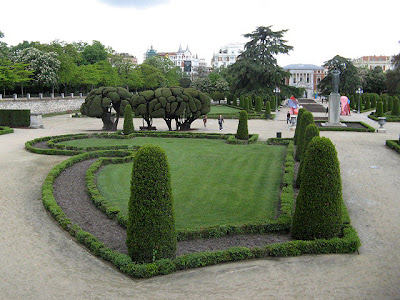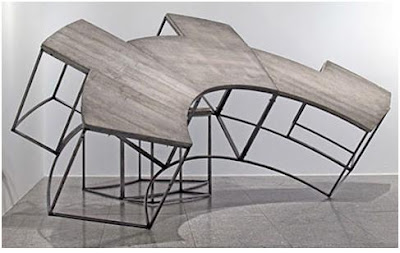As mentioned in a previous post I eluded to the idea that I was on the outs with Egypt. During the post- revolution months, life in Alex has turned into living in a fishbowl. I had exhausted my resources in finding excitement...I had become numb to the external offerings outside of work. I've had my mind expanded and blown in so many different ways, but the honeymoon was over and I wanted out. The school's director (we'll call him Nacho) calmed me down a bit by putting things into perspective. A long weekend was approaching and we decided to put some space between Alex and making a rash decision. We headed to Madrid to decompress and to figure out our future. The break from chaos was good for the soul. During our time there Ana and I thought about some of the things we could do to make life more manageable and meaningful in Egypt; ways to not feel so confined living on campus. The aspects of our jobs for the most part and our friends we cohabitate with are a non-issue, it is more our less the limited number of activities there is to do outside of school coupled with constant chaos when stepping out the front gate. Our task for next year is to have an external space that is currently in the works. I won't spill much more of our plan as not to jinx it. Without further fuss lets move on to Madrid.
 |
| Chueca had more than its' fair share of Mexican themed eateries. |
 |
| One of my all time favorite street signs. I always thought it was a warning of zombies lurking along narrow paths between buildings. |
 |
| The sign says it all. |
 |
| Plaza Mayor with a Mariachi, sure same language but wrong country. The dude to the right of the group wasn't really in the band, he just wanted to be up close and personal. |
 |
| Parque del Retiro was a nice escape from the neighborhoods. Ana is standing in front of the pond and monument to Alfonso XII. |
 |
| The pond and monument to Alfonso XII. |
 |
| The garden leading to the Prado. |
 |
| Your favorite trees. |
 |
| Puerta de Alcala in Independence Square. |
 |
| Santa Semana festivities. |
 |
| Ironically the Klan (KKK) hate Catholics so what gives? |
 |
| Unlike a Klan rally, a variety of hoods and robes can be seen during a procession. |
 |
| Toxic nachos and guac. |
 |
| With the mariachis, nachos, and calaveras you'd swear that you were in Mexico. |
 |
| A trip to the Spanish capital isn't complete without a stop at Las Ventas for a corrida de toros (bullfight). |
 |
| The Reina Sofia is another favorite. We saw some political propaganda. |
 |
| The best self portrait ever by Alfonso Ponce de Leon. The artist lived to the ripe age of 30! This painting would be telling of his fate as he was murdered shortly after. |
 |
| Not sure if this was an exhibit, but it has all the components to fit nicely with the Minimalist. The highlight of the Reina Sofia was the Roberto Jacoby exhibit. Jacoby is one of the leading figures of Argentine contemporary art. The exhibit showcased a collection of the artists' belongings and recording from his 80's rock band Virus. For a more detailed description and photos click here. Works by Asier Mendizabal were also featured. A hard, Merciless Light-The Worker Photography Movement, 1926-1939 was also a featured contemporary exhibit. The collection of image and magazine covers was tiresome, it would be the last exhibit our tired eyes would endure. To learn more about the collection click here. |
 |
| The steps leading out the back of the museum (BTW we did see Picasso's Guernica-how could we have missed it!) there was Economicos by Efren Alvarez; a collection of in-your-face political drawings. To read more about the show click here. |











No comments:
Post a Comment